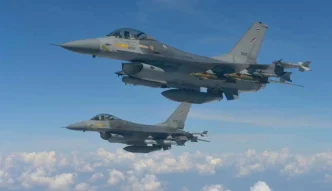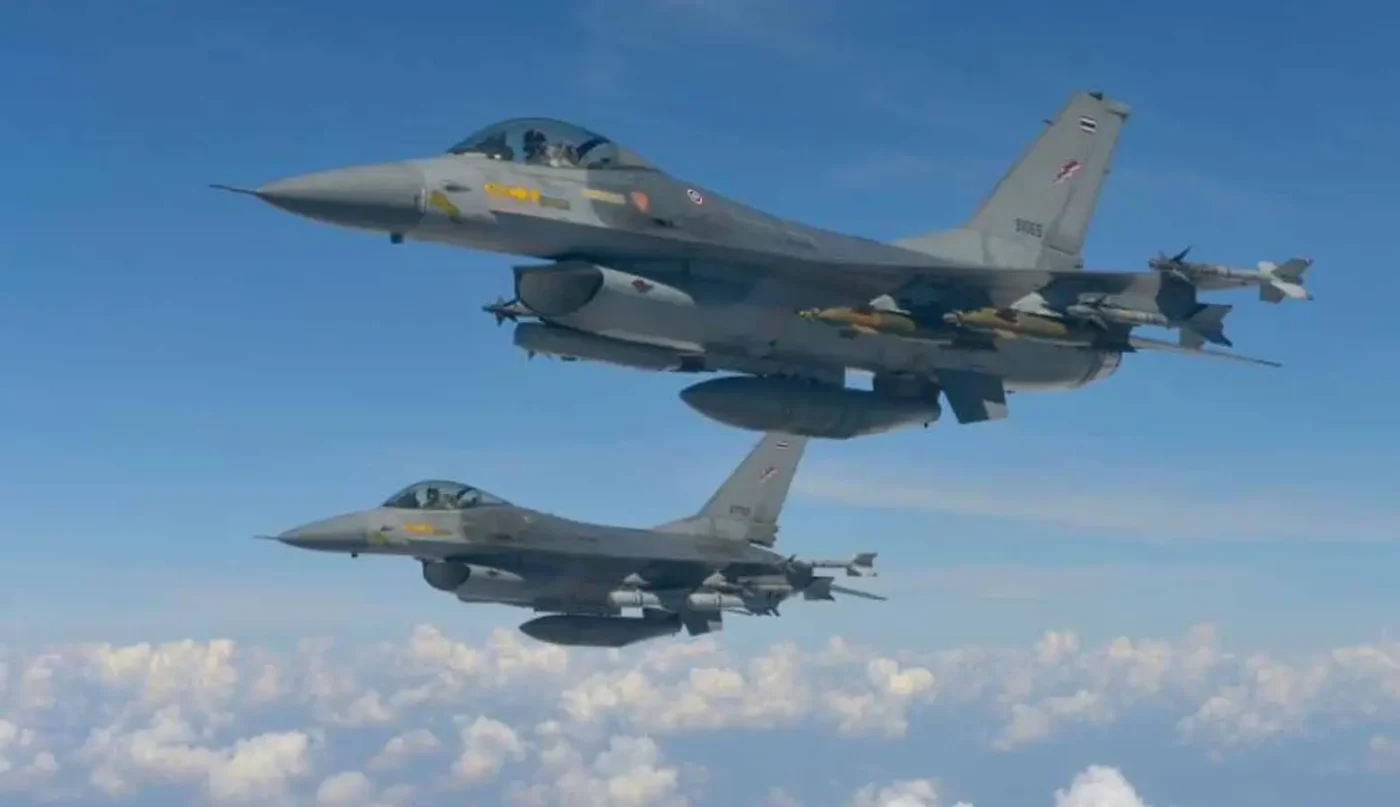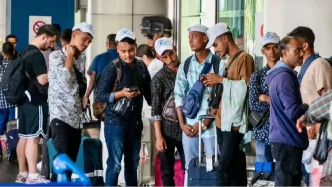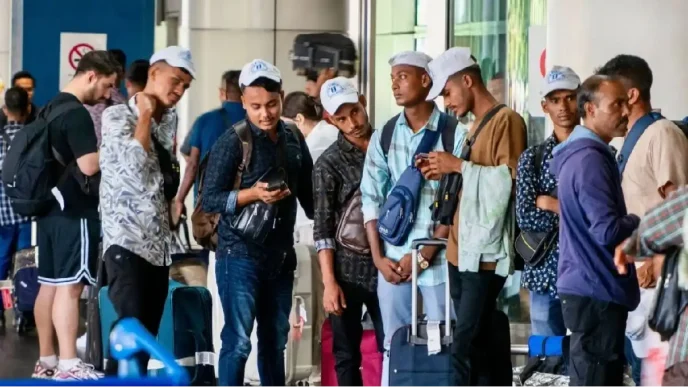In a dramatic escalation of regional tensions, the Royal Thai Air Force deployed two F-16 fighter jets to intercept a Myanmar military aircraft suspected of conducting bombing operations near the shared border. The incident, which unfolded in the skies above Thailand’s western frontier, has spotlighted the growing instability in Myanmar and the spillover risks for neighboring countries. As fighting intensifies between Myanmar’s military junta and resistance forces, Thailand finds itself navigating a delicate balance between national security and diplomatic restraint.
Details of the Interception
The Thai Air Force confirmed that the operation took place after radar systems detected an unidentified aircraft approaching Thai airspace from Myanmar’s territory. Sources within the military indicated that the aircraft was believed to be engaged in a bombing mission targeting opposition forces near the border, though specific details about the aircraft’s payload or intended target remain unconfirmed. The F-16 jets were scrambled from a nearby airbase to intercept and monitor the situation, ensuring the aircraft did not cross into Thai territory.
A spokesperson for the Royal Thai Air Force stated, “Our primary objective is to safeguard national sovereignty and prevent any incursions into Thai airspace” during a press briefing. While the interception did not result in direct confrontation, the move underscores Thailand’s heightened vigilance amid the ongoing civil conflict in Myanmar, which has displaced thousands and fueled cross-border security concerns.
Context of Myanmar’s Conflict
Myanmar has been embroiled in turmoil since the military coup in February 2021, which ousted the democratically elected government of Aung San Suu Kyi. The junta’s brutal crackdown on dissent has sparked widespread resistance, with ethnic armed organizations and civilian militias engaging in fierce battles across the country. The border regions, particularly in Kayin (Karen) and Shan states, have become flashpoints, with frequent reports of airstrikes and artillery barrages targeting rebel strongholds.
The conflict’s proximity to Thailand has long posed challenges for Bangkok. Over the past two years, tens of thousands of Myanmar refugees have fled into Thailand, seeking safety from the violence. Thai authorities have struggled to manage the influx while maintaining a policy of non-interference in Myanmar’s internal affairs. However, incidents like the recent aircraft interception suggest that neutrality may be increasingly difficult to sustain as the conflict encroaches on Thai soil.
Thailand’s Security Dilemma
For Thailand, the interception of the Myanmar aircraft is more than a routine border patrol operation; it reflects a broader security dilemma. On one hand, the Thai government is keen to avoid being drawn into the quagmire of Myanmar’s civil war. Historically, Thailand has maintained diplomatic ties with Myanmar’s military leadership, even as Western nations imposed sanctions on the junta. On the other hand, the risk of stray munitions, refugee surges, and airspace violations demands a robust response to protect national interests.
Security analysts note that Thailand’s deployment of F-16 jets—a significant show of military capability—sends a clear message to Myanmar’s junta that border violations will not be tolerated. “This is a calculated move to deter future incursions while avoiding direct conflict” said Dr. Panida Srisuk, a regional security expert based in Chiang Mai. “Thailand is walking a tightrope, balancing deterrence with diplomacy.”
Public sentiment in Thailand, particularly in border communities, also reflects growing unease. Residents of Mae Hong Son and Tak provinces, which lie adjacent to Myanmar’s conflict zones, have reported hearing explosions and seeing military aircraft in recent months. “We just want peace and safety” said a local shopkeeper in Mae Sot, a key border town. “But the fighting keeps getting closer.”
Regional Implications
The incident raises broader questions about the stability of Southeast Asia, a region already grappling with economic challenges and geopolitical rivalries. The Association of Southeast Asian Nations (ASEAN), of which both Thailand and Myanmar are members, has faced criticism for its inability to broker a resolution to the Myanmar crisis. Despite a five-point consensus plan agreed upon in 2021, which called for an end to violence and dialogue among stakeholders, little progress has been made.
Thailand’s actions could prompt other neighboring countries, such as Laos and Bangladesh, to reassess their border security protocols. It also highlights the limitations of regional mechanisms in addressing transnational threats. “ASEAN’s principle of non-interference is being tested like never before” said a Bangkok-based diplomat who requested anonymity. “Incidents like this show how internal conflicts can quickly become regional problems.”
Moreover, the involvement of military hardware like F-16 jets draws attention to the militarization of border areas. Thailand’s air force, equipped with advanced US-made fighters, stands in stark contrast to Myanmar’s aging fleet, much of which relies on Russian and Chinese technology. This disparity could complicate future encounters, especially if misunderstandings escalate into unintended clashes.
Humanitarian Fallout
Beyond the immediate military implications, the interception underscores the humanitarian toll of Myanmar’s conflict. The United Nations estimates that over 2.5 million people have been displaced within Myanmar since the coup, with many seeking refuge in neighboring countries. Thailand hosts an estimated 90,000 Myanmar refugees in temporary camps along the border, though aid organizations warn that resources are stretched thin.
Recent reports suggest that airstrikes in Myanmar’s border regions have intensified, driving more families to flee. Humanitarian workers in Thailand fear that further military escalations—whether by Myanmar’s junta or through Thai responses—could exacerbate the crisis. “Every time there’s a military operation, we see a new wave of people crossing the border” said a representative from a local NGO in Mae Sot. “They arrive with nothing, and we’re struggling to meet their needs.”
Diplomatic Challenges Ahead
The Thai government now faces the challenge of addressing the incident through diplomatic channels without inflaming tensions. Analysts expect Bangkok to lodge a formal protest with Myanmar’s military authorities, though the junta’s responsiveness to such overtures remains uncertain. Previous attempts to engage the regime on border issues have yielded mixed results, with Myanmar often prioritizing its internal security over regional concerns.
At the same time, Thailand must manage domestic political pressures. The government of Prime Minister Srettha Thavisin, which came to power in 2023, has faced criticism for its handling of the Myanmar crisis. Opposition parties have called for a tougher stance against the junta, while business leaders worry about the economic impact of border instability on trade and tourism. The border region, particularly around Mae Sot, serves as a vital conduit for goods, with annual trade between Thailand and Myanmar valued at approximately 180 billion Thai Baht (US$5.1 billion).
Looking Forward
As the dust settles on this latest border incident, the trajectory of Thailand-Myanmar relations remains uncertain. The interception of the Myanmar aircraft may be a isolated event, but it serves as a stark reminder of the fragility of peace in the region. With no end in sight to Myanmar’s civil war, Thailand and its neighbors must prepare for the possibility of further spillover effects, from refugee flows to security threats.
For now, the Royal Thai Air Force remains on high alert, with officials pledging to monitor the border closely. Yet, as one Thai military analyst put it, “Interceptions can prevent immediate threats, but they don’t address the root causes of the conflict next door.” As both countries grapple with the consequences of Myanmar’s unrest, the question looms: how long can Thailand maintain its delicate balancing act before being forced to take a more decisive stand?
















